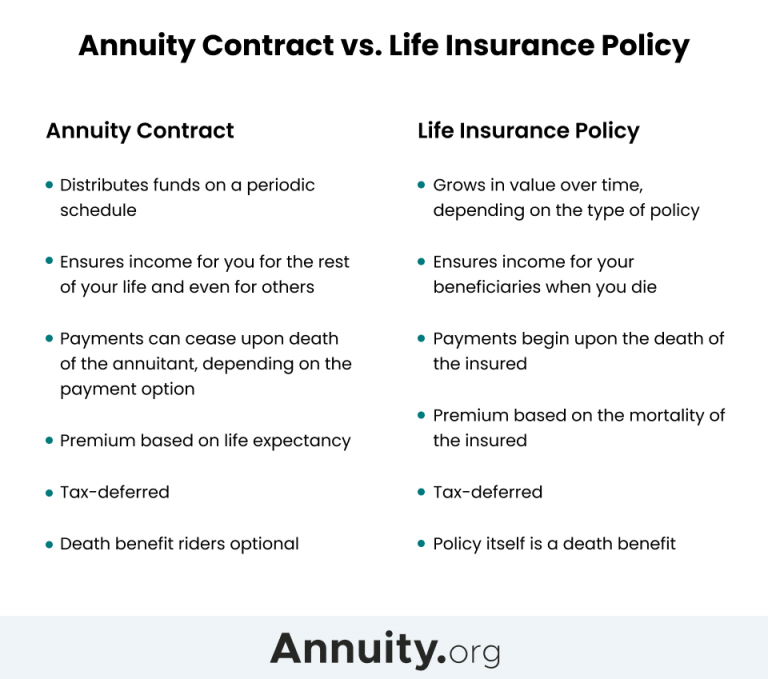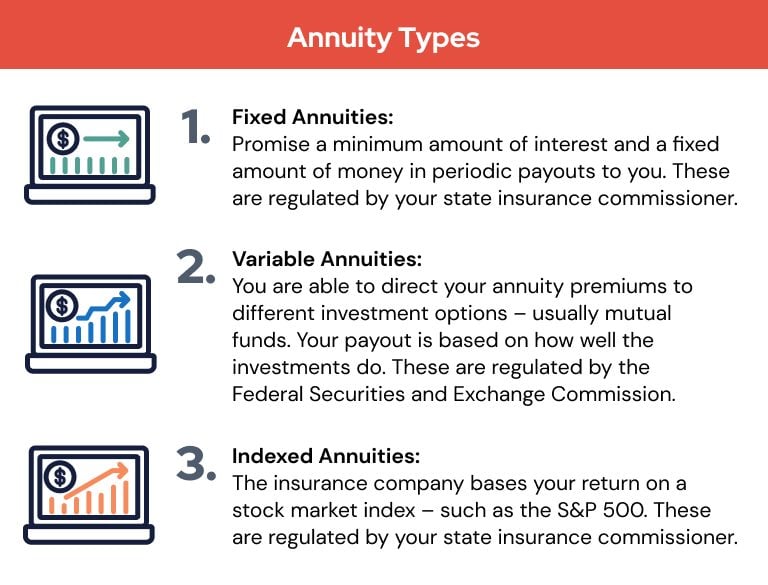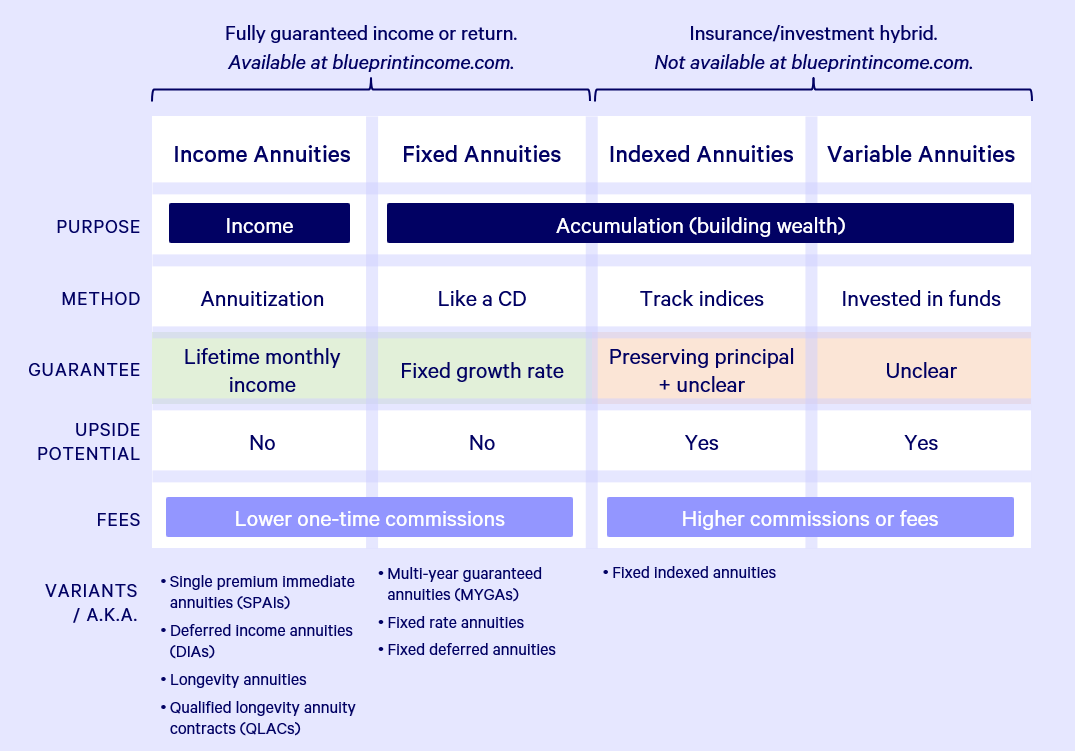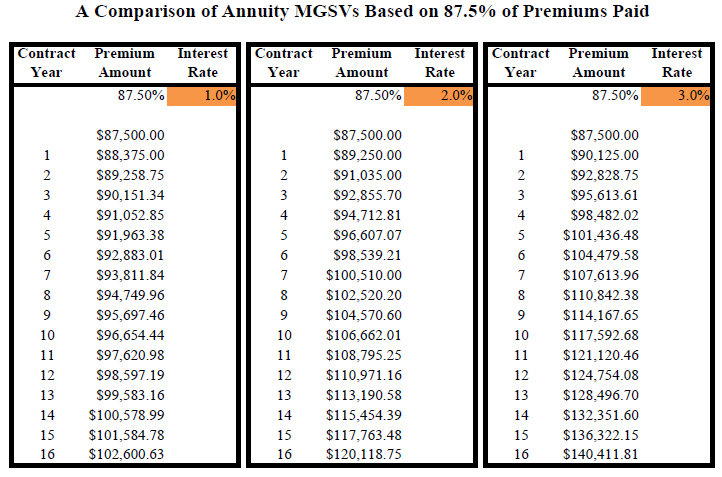All Categories
Featured
Table of Contents
Equally as with a fixed annuity, the proprietor of a variable annuity pays an insurance provider a round figure or series of payments in exchange for the promise of a collection of future settlements in return. As pointed out above, while a taken care of annuity expands at an assured, consistent rate, a variable annuity expands at a variable price that depends upon the performance of the underlying financial investments, called sub-accounts.

Throughout the build-up phase, properties invested in variable annuity sub-accounts expand on a tax-deferred basis and are taxed only when the contract owner withdraws those incomes from the account. After the buildup stage comes the income stage. With time, variable annuity properties must theoretically raise in value until the agreement owner chooses he or she would certainly like to start taking out money from the account.
The most significant problem that variable annuities generally present is high expense. Variable annuities have a number of layers of charges and expenditures that can, in aggregate, produce a drag of up to 3-4% of the contract's value each year.
Understanding Tax Benefits Of Fixed Vs Variable Annuities Key Insights on Fixed Annuity Vs Equity-linked Variable Annuity What Is the Best Retirement Option? Features of Smart Investment Choices Why Variable Annuity Vs Fixed Annuity Is a Smart Choice Variable Annuity Vs Fixed Indexed Annuity: How It Works Key Differences Between Different Financial Strategies Understanding the Risks of Long-Term Investments Who Should Consider Fixed Index Annuity Vs Variable Annuity? Tips for Choosing What Is Variable Annuity Vs Fixed Annuity FAQs About Fixed Indexed Annuity Vs Market-variable Annuity Common Mistakes to Avoid When Choosing Fixed Vs Variable Annuity Financial Planning Simplified: Understanding Your Options A Beginner’s Guide to Smart Investment Decisions A Closer Look at How to Build a Retirement Plan
M&E cost charges are calculated as a portion of the agreement value Annuity providers hand down recordkeeping and various other management costs to the agreement owner. This can be in the kind of a level annual fee or a percentage of the contract value. Management charges might be included as part of the M&E risk charge or may be evaluated separately.
These charges can range from 0.1% for passive funds to 1.5% or even more for actively taken care of funds. Annuity agreements can be personalized in a variety of methods to offer the specific requirements of the agreement proprietor. Some common variable annuity bikers include ensured minimal buildup advantage (GMAB), ensured minimum withdrawal benefit (GMWB), and assured minimum earnings advantage (GMIB).

Variable annuity payments give no such tax obligation deduction. Variable annuities tend to be highly ineffective vehicles for passing wealth to the next generation since they do not delight in a cost-basis modification when the original contract proprietor dies. When the proprietor of a taxable investment account passes away, the expense bases of the investments held in the account are changed to mirror the market prices of those investments at the time of the proprietor's death.
Analyzing Strategic Retirement Planning Key Insights on Your Financial Future Breaking Down the Basics of Fixed Annuity Vs Variable Annuity Benefits of Choosing the Right Financial Plan Why Choosing the Right Financial Strategy Can Impact Your Future What Is A Variable Annuity Vs A Fixed Annuity: Explained in Detail Key Differences Between Annuities Variable Vs Fixed Understanding the Risks of Long-Term Investments Who Should Consider Indexed Annuity Vs Fixed Annuity? Tips for Choosing the Best Investment Strategy FAQs About Annuities Fixed Vs Variable Common Mistakes to Avoid When Planning Your Retirement Financial Planning Simplified: Understanding Your Options A Beginner’s Guide to Smart Investment Decisions A Closer Look at Variable Annuity Vs Fixed Annuity
Successors can inherit a taxable financial investment profile with a "clean slate" from a tax obligation viewpoint. Such is not the instance with variable annuities. Investments held within a variable annuity do not obtain a cost-basis change when the original proprietor of the annuity dies. This implies that any kind of built up unrealized gains will certainly be passed on to the annuity proprietor's beneficiaries, in addition to the connected tax concern.
One substantial problem connected to variable annuities is the potential for conflicts of passion that may feed on the part of annuity salespeople. Unlike an economic expert, that has a fiduciary duty to make investment decisions that benefit the client, an insurance broker has no such fiduciary obligation. Annuity sales are highly lucrative for the insurance coverage specialists that offer them as a result of high ahead of time sales payments.

Lots of variable annuity agreements include language which puts a cap on the portion of gain that can be experienced by specific sub-accounts. These caps protect against the annuity proprietor from completely taking part in a part of gains that could otherwise be enjoyed in years in which markets generate substantial returns. From an outsider's perspective, it would certainly seem that financiers are trading a cap on financial investment returns for the aforementioned assured floor on investment returns.
As noted above, surrender costs can severely limit an annuity proprietor's capability to move assets out of an annuity in the very early years of the contract. Even more, while the majority of variable annuities enable agreement proprietors to take out a defined amount throughout the build-up phase, withdrawals past this amount typically cause a company-imposed cost.
Withdrawals made from a fixed rate of interest financial investment option might also experience a "market price adjustment" or MVA. An MVA changes the value of the withdrawal to show any kind of modifications in rate of interest from the time that the cash was purchased the fixed-rate choice to the time that it was taken out.

On a regular basis, also the salesmen that offer them do not completely comprehend how they function, therefore salesmen occasionally exploit a purchaser's emotions to market variable annuities as opposed to the qualities and suitability of the items themselves. We think that investors must fully comprehend what they possess and just how much they are paying to own it.
Decoding Fixed Index Annuity Vs Variable Annuities Everything You Need to Know About Annuities Fixed Vs Variable Defining the Right Financial Strategy Benefits of Choosing the Right Financial Plan Why Variable Annuity Vs Fixed Annuity Is Worth Considering How to Compare Different Investment Plans: A Complete Overview Key Differences Between Annuity Fixed Vs Variable Understanding the Risks of Fixed Annuity Or Variable Annuity Who Should Consider Strategic Financial Planning? Tips for Choosing What Is Variable Annuity Vs Fixed Annuity FAQs About Fixed Annuity Vs Variable Annuity Common Mistakes to Avoid When Planning Your Retirement Financial Planning Simplified: Understanding Deferred Annuity Vs Variable Annuity A Beginner’s Guide to Fixed Index Annuity Vs Variable Annuities A Closer Look at How to Build a Retirement Plan
The very same can not be stated for variable annuity assets held in fixed-rate financial investments. These possessions lawfully come from the insurer and would therefore go to risk if the business were to fall short. In a similar way, any assurances that the insurance provider has actually accepted provide, such as an ensured minimal revenue benefit, would certainly be in question in the occasion of an organization failing.
Potential buyers of variable annuities need to understand and think about the financial condition of the issuing insurance firm prior to getting in right into an annuity contract. While the benefits and downsides of different types of annuities can be questioned, the genuine issue bordering annuities is that of viability.
Besides, as the stating goes: "Caveat emptor!" This post is prepared by Pekin Hardy Strauss, Inc. Income annuities for retirement. ("Pekin Hardy," dba Pekin Hardy Strauss Wealth Management) for educational objectives only and is not intended as a deal or solicitation for business. The details and information in this article does not comprise lawful, tax obligation, bookkeeping, investment, or other professional recommendations
Table of Contents
Latest Posts
Analyzing Strategic Retirement Planning A Comprehensive Guide to Investment Choices Breaking Down the Basics of Variable Annuity Vs Fixed Indexed Annuity Benefits of What Is A Variable Annuity Vs A Fi
Analyzing Strategic Retirement Planning A Comprehensive Guide to Variable Annuity Vs Fixed Indexed Annuity Defining Indexed Annuity Vs Fixed Annuity Benefits of Fixed Vs Variable Annuity Pros And Cons
Decoding How Investment Plans Work A Comprehensive Guide to Investment Choices Breaking Down the Basics of Variable Annuity Vs Fixed Indexed Annuity Features of Fixed Annuity Vs Equity-linked Variable
More
Latest Posts